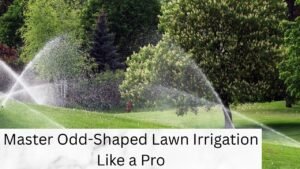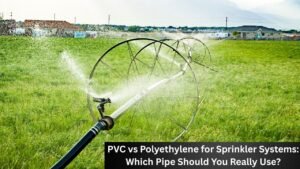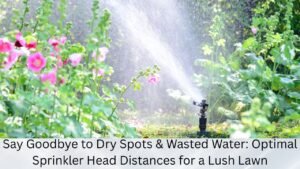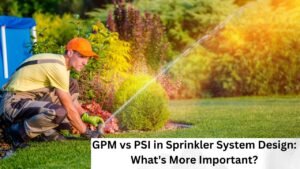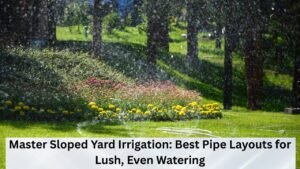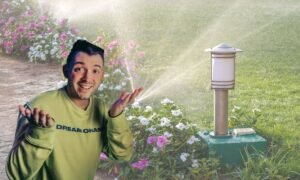Maintaining a lush lawn in Wichita requires proper sprinkler system maintenance Wichita. With the city’s unique climate and soil conditions, having a well-tuned sprinkler setup can make all the difference.
This guide dives into the essential components of a sprinkler system, troubleshooting tips, and advanced water conservation techniques tailored specifically for Wichita homeowners. If you’re just getting started, take a moment to explore our Sprinkler System 101 guide for a foundational understanding of how irrigation systems function.
Understanding the Core Components of a Sprinkler System
A sprinkler system’s efficiency hinges on understanding each component’s role. Here’s a detailed look at each part, with insights into their materials and energy efficiency. For quick definitions on each part mentioned here, visit our Ultimate Sprinkler System Glossary for Beginners.
Here’s a detailed look at each part, with insights into their materials and energy efficiency.
1. The Controller: The Brain of Your System
What It Is: The controller schedules and manages watering times. It’s crucial for adapting to Wichita’s climate variations.
Types of Controllers:
- Digital Controllers: Feature advanced options like Wi-Fi connectivity and weather sensors. These controllers adjust watering based on real-time data, enhancing efficiency.
- Analog Controllers: Simpler, with manual settings. They’re less costly but require regular adjustments.
Component Lifespan: Digital controllers last 5-10 years. Analog models can last longer but lack modern conveniences.
Materials and Energy Efficiency: Look for controllers made from high-quality, weather-resistant materials. Opt for energy-efficient models to reduce power consumption and operational costs.
Maintenance Tip: Regularly update software and check connections to ensure optimal performance.
2. Valves: The Gatekeepers of Water Flow
What They Are: Valves control water flow to various zones.
Types of Valves:
- Manual Valves: Require manual operation, which can be cumbersome but reliable.
- Electric Valves: Controlled electronically, allowing for precise water distribution.
Component Lifespan: Valves generally last 8-12 years with proper maintenance.
Materials Used: Valves come in materials like brass, plastic, and stainless steel. Brass and stainless steel offer durability but can be more expensive. Plastic valves are cost-effective but may wear out quicker.
Maintenance Tip: Inspect and clean valves regularly to avoid clogs and ensure smooth operation.
3. Pipes and Tubing: The System’s Lifelines
What They Are: Pipes and tubing transport water from the source to the sprinkler heads.
Materials Used:
- PVC Pipes: Known for durability and resistance to corrosion. Ideal for Wichita’s diverse soil conditions.
- Polyethylene Tubing: Flexible and resistant to freezing, making it suitable for winter.
Component Lifespan: PVC pipes last 20-25 years; polyethylene tubing lasts 10-15 years.
Energy Efficiency: Insulating pipes can reduce energy use and prevent freeze damage.
Maintenance Tip: Regularly inspect pipes for leaks or damage and insulate them during winter.
4. Sprinkler Heads: The Workhorses of Your System
What They Are: Sprinkler heads distribute water over the lawn.
Types of Sprinkler Heads:
- Rotary Heads: Best for large areas with varying soil types. They provide a broad, adjustable spray.
- Pop-Up Heads: Ideal for high-traffic areas where heads need to retract.
- Impact Heads: Provide strong, targeted watering for large spaces.
Component Lifespan: Generally lasts 5-10 years. Frequent adjustments and cleaning extend their lifespan.
Materials Used: Heads are typically made from durable plastic or metal. Metal heads offer longer durability but at a higher cost.
Maintenance Tip: Clean and adjust heads regularly to prevent clogs and ensure even coverage.
5. Backflow Preventer: The Safety Guard
What It Is: Prevents contaminated water from flowing back into the main water supply.
Types of Backflow Preventers:
- Pressure Vacuum Breaker: Commonly used in residential systems.
- Reduced Pressure Zone (RPZ) Device: Offers high-level protection for larger systems.
Component Lifespan: Lasts 5-10 years. Regular testing is required.
Maintenance Tip: Test annually and ensure compliance with local regulations.
Check out below video to find out more information on Sprinkler System Parts & Components for easy understanding.
Expanded Troubleshooting for Wichita Homeowners
Sprinkler systems face various issues. Here’s an expanded troubleshooting guide with seasonal tips and DIY repair options.
Common Problems:
- Low Water Pressure: Check for blockages or leaks in pipes and heads.
- Uneven Coverage: Inspect sprinkler head alignment and clean debris.
- Frequent Clogs: Regularly clean filters and heads.
If you’re unable to resolve the issue yourself, consider contacting a Wichita sprinkler repair service for professional assistance
Step-by-Step Solutions:
- Low Water Pressure:
- Clean filters and remove debris from pipes.
- Check valves for proper operation.
- Ensure adequate water supply.
- Uneven Coverage:
- Adjust sprinkler head positions and spray patterns.
- Check for obstructions and clean heads.
- Verify system pressure and flow rate.
- Frequent Clogs:
- Clean or replace filters and screens.
- Flush the system to clear debris.
- Inspect and clean heads regularly.
Seasonal Issues:
- Winter Freeze-Ups: Ensure pipes are insulated and the system is properly winterized.
- Summer Malfunctions: Regularly check for leaks and system performance due to increased usage.
DIY Repair Videos: Check out video below on how you can replace sprinkler heads easily.
Advanced Water Conservation Techniques
Drip Irrigation: Delivers water directly to the root zone, ideal for gardens and flower beds. Reduces water waste and improves efficiency.
Greywater Recycling: Reuse water from household activities for irrigation. Ensure the system meets local regulations.
Rainwater Harvesting: Collect and use rainwater for irrigation. Reduces dependence on municipal water and lowers costs.
Plant Selection: Choose drought-tolerant plants that require less water, such as native grasses and shrubs.
Soil Improvement: Enhance soil quality with compost and organic matter to improve water retention and reduce overall water needs.
Local Incentives: Check out Wichita’s water conservation rebates and incentives for installing efficient systems and technologies.
DIY Maintenance and Repair Tips
Check out the video below to learn more on fixing leaks on your sprinkler system.
Maintenance Schedule:
- Spring: Inspect and clean components. Adjust for increasing temperatures.
- Summer: Monitor performance and adjust for heat.
- Fall: Begin winterization and prepare the system for cold weather.
- Winter: Ensure the system is fully winterized to prevent damage.
Comprehensive Understanding
Sprinkler System Design
I explain how to plan sprinkler layouts for consistent coverage. The youtube video below: Sprinkler System Design – How Many Heads on a Line? by Ewing Outdoor Supply (YouTube, January 31, 2020) breaks down spacing and head count so you can avoid dry spots and maintain even watering.
Basic Guidelines:
- Layout: Design a system based on lawn size and shape. Ensure even coverage and efficient water use.
- Component Selection: Choose components based on your system’s needs and local climate.
Smart Home Integration
How to Integrate:
- Smart Controllers: Sync with home automation systems for remote control and efficiency.
- Voice Assistants: Use voice commands to adjust settings and monitor system performance.
Conclusion
Understanding the parts of your sprinkler system and how they work together is essential for maintaining a beautiful lawn in Wichita. By following these detailed tips and utilizing advanced water conservation techniques, you can keep your lawn lush and healthy while navigating Wichita’s unique climate challenges.
Share this guide on social media and tag local Wichita businesses specializing in lawn care or sprinkler systems. For personalized advice or professional services, contact a local sprinkler expert today!
